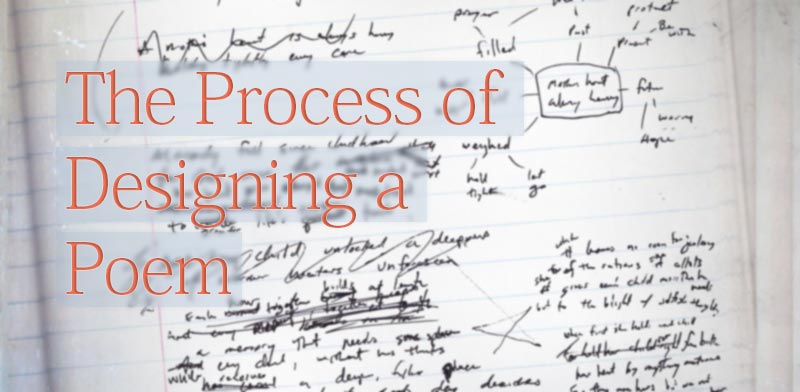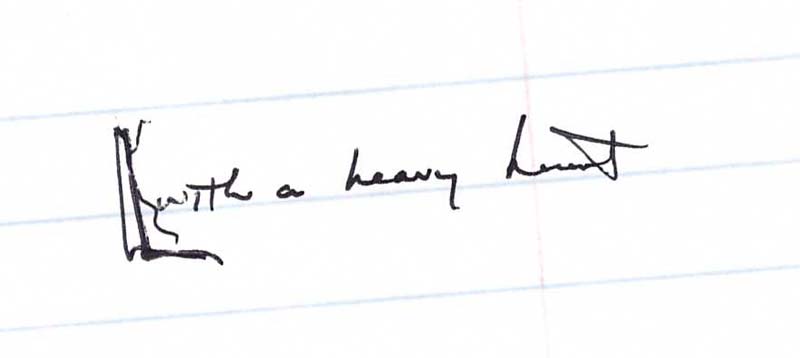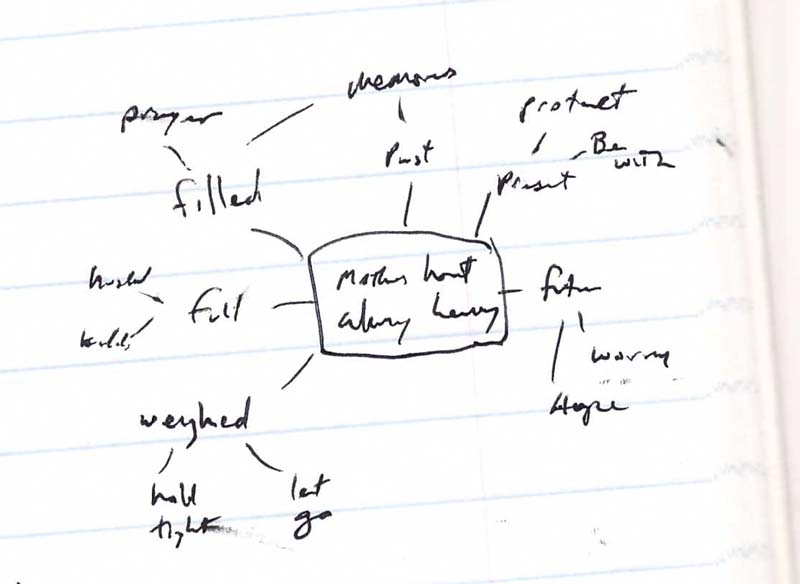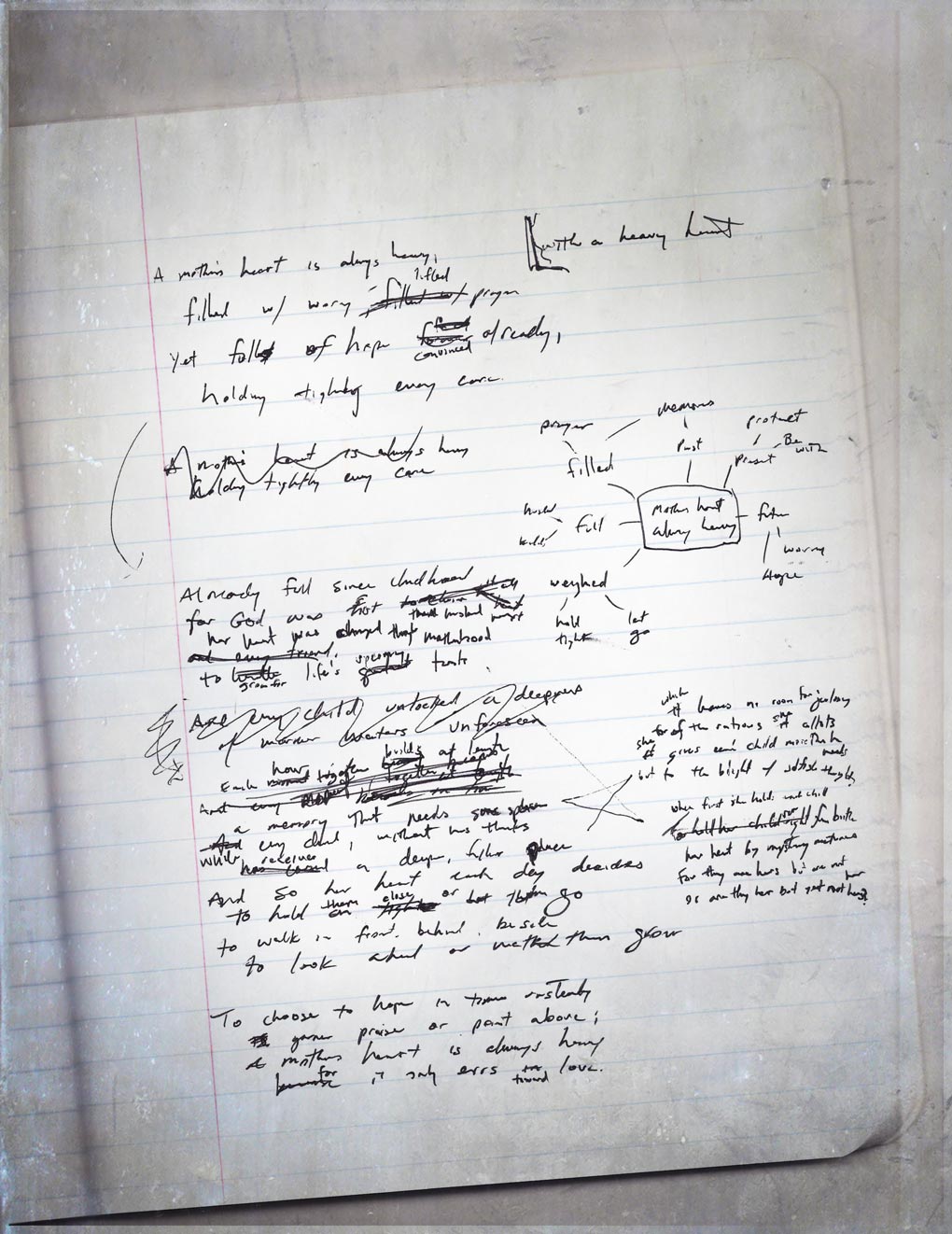
Here is the process I used in creating “A Mother’s Heart is Always Heavy“. I’m sharing it in hopes that it is an encouragement to others to create meaningful poetry and share it with the world.
Topic and Theme Selection
Similar to designing anything else, before writing a poem you should consider your audience, design constraints and goals. From the onset I knew the primary audience for this poem would be my mom, and, since I was on a flight to see my brother, I made a goal of finishing the poem before the plane landed.
Before considering structure, I dig deep into the heart of what the topic is. I felt that this poem needed to be about the struggle of the servant heart of a mother, something that has really been brought to the forefront for my family right now as my brother is in a live-or-death situation in his battle with cancer.
I generally try to avoid phrases that are all too common, but in seeking a foundational theme, I do tend to gravitate towards familiar phrases that can have multiple meanings. The first thing I jotted in my notebook was the phrase “with a heavy heart”, which seemed appropriate because of its emotional connotations with sorrow and empathy, as well as perhaps the connotation of a full and substantial heart. Again reflecting on my mother, I felt that her heart must have always been full, always been heavy. And hence from this I arrived at the topic and theme of the poem.

Theme Development
To unlock more about this theme of a mother’s heart always being heavy, I created a simple mindmap. I did this with two intentions:
- first, to get as much information out of my head and onto paper as quickly as possible;
- second, that the branches might become the embryonic stanzas of the poem.
In reality though, those branches and nodes became elements that were important to weave into the poem rather than the structure of the poem itself.

Poem Structure
Then, perhaps the most challenging part, putting the pen to the paper. I generally like to write poems in prose before considering rhyming and sentence structure. However, this poem was what might be called “rapid poem development”, so I basically only wrote down elements that were complete thoughts in a loose structure of that I wanted for the poem. In some ways, the mindmap functions as a conceptual prose prototype.
The poem uses a simple ABAB rhyming structure in a rather crisp iambic tetrameter (i.e. four “da DAs” per line). The meter was chosen because of the central phrase of “a mother’s heart is always heavy “, which I wanted to be in the opening and closing of the poem. It did present a challenge, however, because the last syllable of “heavy” needed to be carried forward into the next line.
I then crafted loose stanzas, created from the notions in the mindmap, but without the emphasis on stanza order. Then, through continual rereading and refinement, I connected the stanzas and filled in any missing stanzas that were needed for the complete poem.
Refinement Iterations
Now while I did complete the poem before the flight was over, the reality is that I spent several hours over the next week refining it. I apply meticulous attention to the diction, meter, flow, word coloring and overarching first emotional impression of the poem. It’s important to me that each phrase sound and mean exactly what I want it to, and that the phrases are connected in the most logical and meaningful way. You can see the artifacts of this process in the scribbles and edits on the page. Essentially, what I’m trying to do is carve away moments of confusion where the reader would stop and step away from the poem to think, thus leaving her to be drawn in and continue deeper into the poem.

Conclusion
It may not be my best poem, but I am proud of it for what it says and the impact it has had on my mother.
The final version is here.







